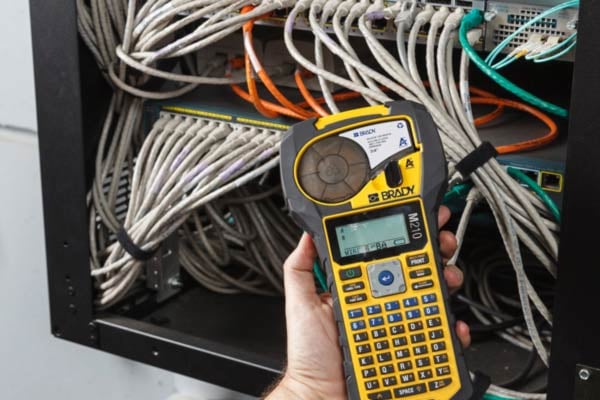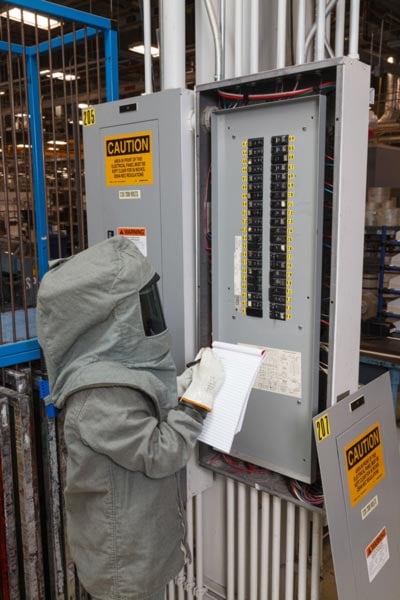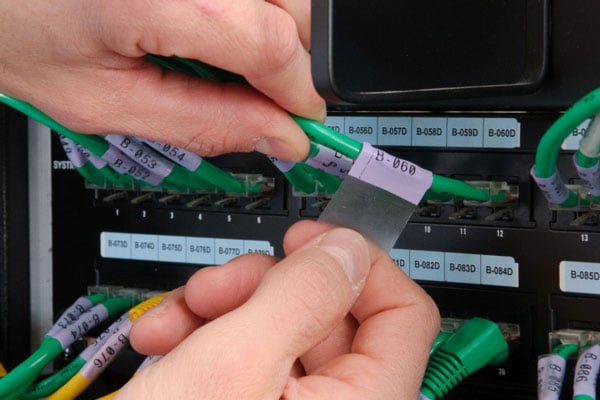A Comprehensive Guide to TIA-942 and Data Center Compliance
Data centers are foundational in the digital economy, supporting everything from cloud services to real-time data processing. The TIA-942 standard provides a comprehensive framework for data center design and infrastructure, covering key aspects like power, cooling, security and network architecture. It defines four tiers of reliability, ensuring uptime, resilience and scalability to meet evolving business needs.
By promoting efficiency and robust performance, TIA-942 helps data centers maintain operational continuity while adapting to technological growth — making it a critical benchmark for infrastructure compliance and long-term sustainability.

Understanding TIA-942 and its purpose
TIA-942 is a globally recognized standard for data center infrastructure, established by the Telecommunications Industry Association (TIA)(opens in a new tab). The TIA, a leading authority in telecommunications and technology standards, ensures consistent, high-performance infrastructure across industries. TIA-942 outlines requirements for critical components like cabling, power, cooling and physical security in data centers — supporting reliability, scalability and operational efficiency. It defines four tiers of data center resilience, guiding organizations in achieving desired uptime and performance levels.
Beyond physical infrastructure, TIA-942 includes operational guidelines, promoting effective maintenance and risk management practices — making it an essential framework for ensuring data center compliance, robustness and long-term sustainability in today’s data-driven economy.
The evolution of TIA-942: key revisions and updates
TIA-942 (initial release) was introduced in 2005, establishing guidelines for data center design and infrastructure, focusing on power, cooling and security. Revisions for the standard include:
- TIA-942-A (2010): TIA-942 Revision A enhanced network infrastructure recommendations, expanded power and cooling systems for higher efficiency and introduced revised tiered reliability levels.
- TIA-942-B (2017): TIA-942 Revision B focused on sustainability and energy efficiency and added advanced requirements for security and disaster recovery. It also emphasized scalability for cloud computing and virtualization.
- TIA-942-C (2022): TIA-942 Revision C was updated for modern technologies like 5G and edge computing, and it refined operational guidelines to ensure flexibility and resilience.
Each revision adapts to emerging technologies, enhancing data center capabilities while addressing environmental and operational demands.

Why TIA-942 compliance matters for data centers
TIA-942 compliance offers significant advantages for data centers, ensuring optimized performance and long-term sustainability. These advantages include:
- Reliability: Ensures consistent uptime and system resilience.
- Scalability: Supports future growth and technological advancements.
- Security: Strengthens physical and network security protocols.
- Energy efficiency: Promotes sustainable power and cooling practices.
Adhering to TIA-942 compliance ensures data centers remain robust, secure and efficient in a rapidly evolving technological landscape.
Key elements of TIA-942 compliance
TIA-942 compliance covers critical elements such as power systems, cooling, security and cabling, ensuring data center efficiency and reliability. Each of these components plays an important role in supporting high-performance infrastructure.

Site selection and building infrastructure
When selecting a data center location, consider factors such as proximity to power sources, network connectivity and the risk of natural disasters. The building layout should allow for scalability, efficient airflow and easy access for maintenance.
Structural integrity ensures the facility can withstand physical stresses like earthquakes or high winds. Geographic risk factors, such as flood zones or extreme weather, should be avoided to minimize operational disruptions. A well-chosen location with a resilient design supports long-term reliability and operational efficiency, which is essential for maintaining uptime and safeguarding critical data.
Electrical and mechanical systems
Power distribution in data centers ensures reliable electricity moves through systems. It relies on backup solutions like uninterruptible power supply (UPS) units and generators to prevent downtime during outages. In these power systems, proper grounding protects against electrical faults and equipment damage.
Heating, ventilation and air conditioning (HVAC) systems regulate temperature and humidity in data centers, while effective airflow management directs cool air to critical areas. Cooling technologies — including in-row cooling, precision cooling and liquid cooling — are employed to manage heat loads and maintain optimal operating conditions.
These electrical and mechanical systems work together to ensure data center efficiency, uptime and the protection of sensitive equipment, keeping it from overheating or enduring electrical disruptions.
Structured cabling and telecommunications standards
Structured cabling and effective network cable management are essential for maintaining organization, scalability and efficiency in data centers. Proper management reduces downtime, improves troubleshooting and ensures optimal airflow. TIA-942 outlines the design and infrastructure requirements for data centers, while TIA-568 focuses specifically on cabling standards, including installation and performance. Together, these standards ensure reliable, high-performance network connectivity and support long-term operational stability.
By adhering to both TIA-942 and TIA-568, data centers maintain physical and network infrastructure compliance, enhancing performance and reducing maintenance complexity.
Fire protection and environmental controls
TIA-942 requires data centers to implement fire suppression systems that quickly extinguish fires without damaging sensitive equipment — clean agents like FM-200 or inert gases are commonly recommended. Building materials should be fire-resistant to enhance structural safety.
The standard also mandates continuous environmental monitoring for temperature and humidity to prevent overheating, condensation and static buildup. Maintaining ideal conditions supports equipment longevity and ensures consistent performance. These fire safety and environmental controls help protect data center infrastructure, minimize downtime and maintain operational reliability.
The role of proper labeling in TIA-942 compliance
Clear labeling is essential for improving maintenance efficiency and reducing downtime in data centers by helping technicians quickly identify cables, racks and equipment. TIA-942 outlines compliance requirements for accurate, consistent cable identification to ensure organized, traceable infrastructure.
Structured labeling for racks and information technology equipment supports faster troubleshooting, upgrades and reconfigurations. High-quality label printers designed for data center environments are key to producing durable, legible labels that withstand heat and humidity. Choosing the right printer is important — portable label printers offer flexibility for on-site labeling, while industrial label printers provide high-volume, long-lasting labels for large-scale deployments.
Implementing TIA-942: best practices for compliance
Evaluating infrastructure for compliance gaps starts with a thorough assessment of data center systems using TIA-942 standards to identify weaknesses in power, cooling, security and cabling.
Risk assessments uncover vulnerabilities that could threaten operational integrity, ensuring systems remain resilient. Detailed documentation provides a clear record of infrastructure, configurations and updates while ensuring transparency and traceability for compliance. Ongoing training keeps staff knowledgeable about best practices, reducing errors and improving response times.
Regular audits and proactive maintenance catch potential issues early, preventing violations and ensuring the data center remains reliable, efficient and fully compliant.
How Brady can help
As you work toward achieving and maintaining TIA-942 compliance, partnering with a trusted expert can make all the difference. Brady offers a comprehensive range of data center solutions designed to support your compliance efforts every step of the way. From industry-leading labeling systems for clear, consistent marking of cables, racks and equipment — to safety and security products that help protect valuable data, Brady delivers the tools you need to build a reliable, standards-based environment. Ready to take the next step? Contact Brady for expert guidance and customized solutions that will keep your data center running smoothly and in full compliance.
